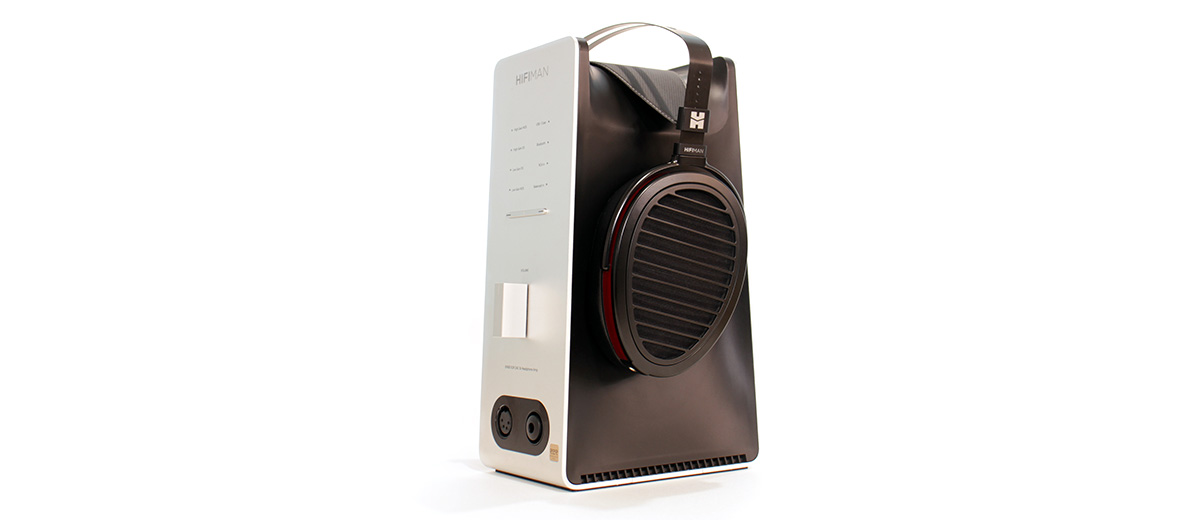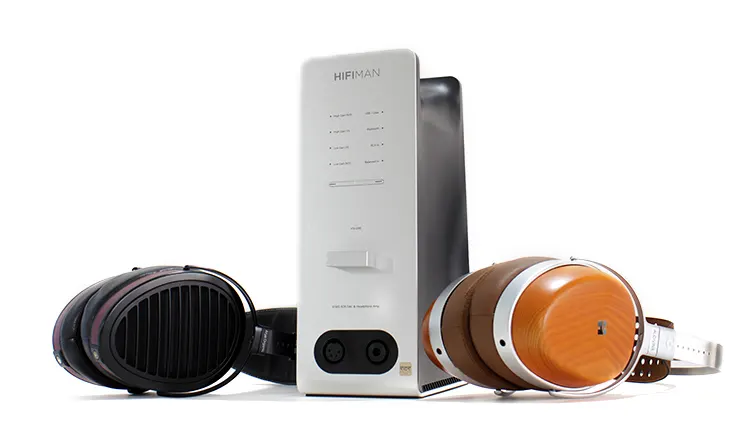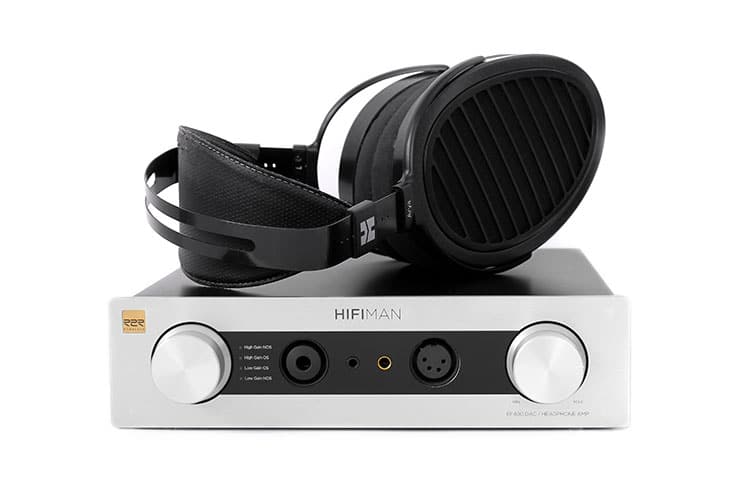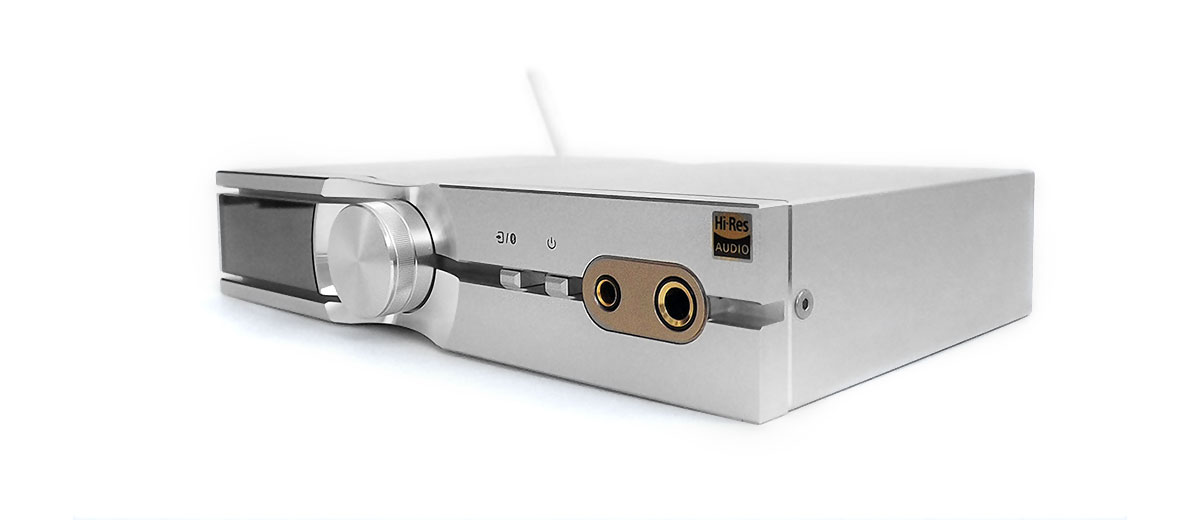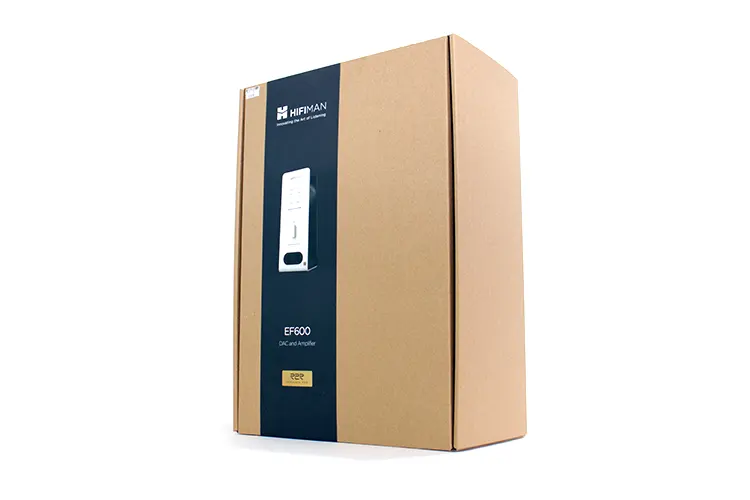Synergy
Noise Floor
While listening to the Svanar and the RE2000 gold edition there was no hiss present, even on high gain. However, neither is susceptible to hiss since they have rather high impedance ratings for IEMs. However, the Svanar which is more sensitive and at 60Ω versus 103Ω, didn’t present an increase in efficiency.
Those IEMs are not good candidates for that test, so I pulled out some FiiO 16Ω IEMs like the FH9 and still could not detect any hiss.
But I wouldn’t use the EF600 for that. It’s a big boy and it should be used with big-boy headphones like the Aryas or the HE1000. Heck, this combo can push my Dekoni Audio Blue headphones easily off the SE side.
Power
As far as driveability, the EF600 is designed for full-sized planar headphones and one can only wonder why with a smirk, excluding the HE6, perhaps. My daunting question was if this behemoth was delicate enough for driving IEMs and it is because it can power-hungry headphones easily.
It seems that the gradual volume increase at the bottom level was intentional, or perhaps not. The high gain and low gain present similar characteristics. So this particular character caters to IEMs and at the same time it supplies enough grunt on the top, power-wise.
Headphone Pairings
The EF600 pairs well with all of the HIFIMAN headphones I tested including the Arya Organic, V2, and the Audivina, although the Audivina seems to prefer the low gain setting since it’s highly efficient and the EF600 can overload them easily.
I also tried the hard-to-drive Dekoni Blue and they also responded well reaching the top level of volume one could withstand. The EF600 didn’t affect their fun factor but brought to the table a smudge of added musicality to the particular can.
My favorite combo overall was with the Organic because they both contribute an organic aspect that combined produces a natural timbre all around. The experience was well-textured, well-balanced, and sonically innate.
Select Comparisons
All DAC performance comparisons were completed using a Topping A90 as the main output amplifier combined with the HIFIMAN Arya version 2, the Arya Organic, and the Audivina.
HIFIMAN EF400
Technical
The EF600 along with the EF400 are similar pitches but the EF400 was designed for horizontal mounting and a slight reduction in power output capability.
There are some notable differences between the two in circuitry. For example, the HIMALAYA DAC implementation went PRO on the EF600 but again, HIFIMAN is faint with the EF600 and EF400 DAC and amplification specifications with mentioned support for PCM up to 24bit resolution.
We also know the amplification output is higher on the EF600 at 5.12 Watts per channel on a 32Ω load and 1.8W single-ended compared to the EF400’s maximum of 4.4w per channel on the same load.
Design
Would you like a vertical device or a horizontal one? Chicken or lasagna? That’s the major choice here as far as cabinet type. You could mount the EF600 horizontally but I highly advise you not to because that would suffocate the unit due to the top convection venting.
Cosmetically, both models are made similarly in that they were fabricated from thick planks of aluminum. But the EF400 has the more appealing design up front and it’s because of the back and silver tone balance. The EF600 faceplate, for example, is 95% silver and presents a simpler appearance.
The volume knob is nicer on the EF400 and HIFIMAN should have taken care of that volume knob play on the EF600 before release but they didn’t, knowing it would be received with criticism. But that’s the major quirk here, nothing else.
Performance
In an A/B test, there’s not much of a difference between these two. There’s a notable amount of extra power on tap on the EF600 but volume levels are similar at the same volume position. This is of no surprise to me since both these models seem to use similar circuitry designs.
Perhaps there’s an extra smudge of that fluidity I was speaking of, particularly with the DAC section on the EF600. It seems most of the improvements were implemented within the amplification section. However, since the EF400 only has outputs to access the DAC, I could not test the amplifier section alone.
But if you connect both DAC sections to an outboard amplifier then both these units will sound similar. You could use the DAC within the EF400 and obtain similar results.
So, it comes down to the improvements within the amplifier section and if you’ll be content with the EF600’s available power.
iFi Audio NEO iDSD
Technical
The NEO as I affectionately call it serves up best what I call media control since it sports a wider choice of inputs including analog XLR plus conventional RCA connectivity. It also offers optical connectivity plus Bluetooth LDAC-level capability.
On top of that, it comes with a remote control so you can control it from your favorite chair. The combination of that and Bluetooth connectivity plus a good amount of outputs can make the iFi Audio iDSD NEO at home on a desktop or as a home entertainment sound control hub.
Connectivity up front is similar but iFi took a different route and substituted the XLR for a smaller profile 4.4mm Pentaconn connection. The power output is rated at 1.04 watts per side which is enough for most headphones but for some hungry headphones that might not cut the cheese.
Design
The all-silver theme is gorgeously done and includes many nuanced visual implementations, channels, and accents surrounding a knurled volume knob that operates smoothly. The volume knob is silent in operation and one of the nicest produced by iFi.
One other positive aspect about the NEO is that it can be vertically or horizontally mounted and it runs cool most of the time and doesn’t produce the heat that the EF600 produces, not even close.
The digital screen was also designed to align itself on vertical or horizontal installation. The NEO cabinet can also be used as a headphone stand but it’s not designed to do so since the edges are well defined.
The EF600 has a rounded shape on top to even out the pressure points on top and not create any indents on your headphone’s headband padding. After a while, if you use the NEO as a stand, the full padding on top will start to assimilate nuggets if you know what I mean.
Performance
If you compare raw power alone then of course the EF600 will take the lead due to the high power output, and high current capability but I would say that this characteristic will only be evident with the top 25% of the most power-hungry headphones out there.
You’re not going to power an HE6 with either and to be honest, in this case, the EF600, said by some, sits on the edge of capably running them, or perhaps the Susvara which are also notoriously hard to drive.
However, when you feed a powerful amplifier, in my case the Topping A90, and use these units as standalone DACs then the NEO might have an edge because it has a similarly excellent DAC section plus the unit is free from clicks and pops when you operate any of the features.
So, if you factor in all the media-friendly NEO features that add MQA unfolding plus DSD, and combined with the armchair convenience of remote control operation, the NEO might be preferable, particularly in a home entertainment center scenario.
Our Verdict
The Hifiman EF600 outperforms the EF400 in most respects and does so standing proudly atop one’s desktop. It also outperforms most combo units at or around its price tier and is another HIFIMAN high-scoring component launch.
The HIFIMAN EF600 has a build quirk or two but it’s a force to be reckoned with when it comes to sound quality. That’s what I look for in a unit like the EF600 and I prefer that over cosmetic delicacies.
It sits atop my desktop as a testament and a commitment to obtain the best sound quality possible and thanks to the HIFIMAN EF600, one doesn’t always have to veer into the over 1K club anymore to achieve it.
HIFIMAN EF600 Technical Specifications
- Signal-to-noise ratio: 118db A-weighted
- Channel separation: 131db ±3db
- THD (line out): 0.0014% (-8db)
- Max power output: 5.12 watts per channel @32Ω Balanced
- Max power output:1.8 watts per channel @32Ω single-ended output
- BT codecs: AAC/SBC/aptX/aptX HD/LDAC

